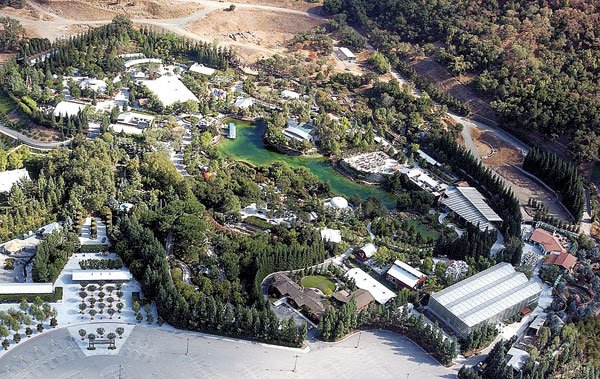With time running out, officials from the city and Gilroy
Gardens hope Monday will be the day the two parties agree on the
sale of the park to the city for about $14 million.
With time running out, officials from the city and Gilroy Gardens hope Monday will be the day the two parties agree on the sale of the park to the city for about $14 million.
Even with the city as the owner, though, the park will still have to pay property taxes because of its business contract with the for-profit theme park operator Cedar Fair, according to Santa Clara County Tax Assessor Larry Stone. After much debate, the park will also pay 25 percent of its profits to the city under new lease terms that the city council will likely tweak again during the study session at City Hall Monday evening.
While no vote on the matter can take place until at least Jan. 22, Monday night will be the first public discussion of the purchase agreement and lease terms since the city and park began hammering out the details. After a Dec. 17 council meeting, compromise became imperative when council members argued about how much the city should charge the park’s nonprofit board of directors to lease the operations of the 536-acre park back to the board. The board’s contract with Cedar Fair, which offers mostly marketing muscle, expires in 2009.
Talk of leasing the park back to the board has been inevitable because city officials have said repeatedly that they do not have the experience or resources to manage a theme park. But when interim City Administrator Anna Jatczak floated the idea of leasing the park back to the board for only $1 per year at the Dec. 17 meeting, Councilman Bob Dillon lambasted the plan as economically senseless.
“I can’t for the life of me figure out – perhaps because I am a capitalist – why we would lease back Gilroy Gardens for $1 a year,” Dillon told the council. “I don’t want to make their lease payment as punitive as the debt, but it has to be something reasonable.”
Something reasonable is the new 25 percent arrangement, Jatczak said. If the park does not turn a profit, however, which has been the case for most of its seven-year existence, it won’t pay a dime to the city. Dillon and Councilman Craig Gartman, among others, have expressed concern about the park’s historically red figures and how that might hinder city finances in the future.
Another financial concern was property tax.
Even though the city will own the land if it buys the park (and everything in the park including the rides), the fact that the board has a contract with Cedar Fair means that Stone, the county tax assessor, has no choice but to tax the park. The city and the board may be a nonprofit, but Cedar Fair isn’t, Stone said.
“Any publicly owned facility (e.g., Gilroy Gardens) that leases out their property to a non-exempt or for-profit entity (e.g., Cedar Fair), that entity has to pay a tax,” Stone said. While the park’s land is actually valued at $60 million, after some nonprofit discounts, the county estimates all the park’s property, for tax purposes, to be worth about $15 million. The park paid the county $176,775, or just more than 1 percent, in property taxes last year, according to assessor figures. Forty-five percent of this went to the Gilroy Unified School District, and 14 percent to the city. The rest went to the county and other local agencies.
The park’s board pays about $1.3 million a year to bondholders. It met its latest payment date last November when it forked over $800,000, according to Bob Kraemer, president of Gilroy Gardens nonprofit board of directors. The next payment of $500,000 is set for March, according to Jatczak, which is why Kraemer said he is anxious for the deal to conclude. This $500,000 also happens to be the same amount set for escrow.
After the expected Jan. 22 vote, the city will likely purchase the park by taking out a 20-year loan for about $14 million. The $14 million figure represents how much all of the park’s outstanding bonds will be worth in November 2010, when they are up for sale, plus ongoing consulting and legal fees.












